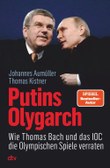Introduction: On month has passed since the launch of DiEM25 (Democracy in Europe Movement 2025) at the Volksbühne Theater in Berlin on February the 9th 2016. After watching the event via live stream I had the fade smack of a coffeehouse revolution. Some well-paid left wing intellectuals (networked link: the blogger as the intellectual of the network society) were presenting their version of a democratic revolution of the European Union and even get paid for it by the audience. For me this form of presentation had nothing in common with a democratic movement. Which means, that DiEM25 has not tried there to represent the political will of the multitude (networked link: michael hardt: demokratie). It just followed the classic authoritarian logic of a small elite who tells the masses what is wrong, what is right and what’s´ to do. Anyway, since every revolution has to start with a small avant-garde, this fade smack might be only the perception of the necessary dictatorship of the beginning.
So in my opinion the first issue for DiEM25 to democratise the European Union is to democratise DiEM25 itself. But this is not a new notion for DiEM25 and its intellectual leader Yanis Varoufakis. So two weeks after the event Yanis Varoufakis published the article on the DiEM25 website. There he talks about the differences of DiEM25 to other social movements, their five major battlegrounds and the process to publish five policy papers. The complete article is available on the website of DiEM25 here in English and here in German.
Critique: Is DiEM25 really a democratic movement?
First of all, since its beginning DiEM25 had made some advantages in democratising itself.
Every article on the page is licensed under a creative commons license (CC-BY-NC 4.0). This license enables everybody to rerelease and alter Varoufakis´ or other DiEM25 articles everywhere he or she likes. As long as the original website has restricted the normal interaction possibilities of the internet like a comment section, the republishing of DiEM25 articles opens the movement to a more public and by this to democratic decision making.
Secondly the movement knows that is not really democratic yet and so the donation button of the website is inactive "until DiEM is up and running and its members can collectively decide how to use the “alienated essence” of human work – your money (as Marx once described it)". These two points are a good start, but Yanis Varoufakis article goes much further and makes a proposal for a process to publish five policy papers. But is this proposal really a democratic proposal?
Conclusion: Is Yanis Varoufakis proposal a democratic proposal?
The simple answer of the question is no. It has lots of democratic deficits in all aspects. First of all, this article is not an outcome of a democratic process, it is an authoritarian outcome of the leader(s) of the movement. Although these five major battlegrounds represent the political will of some protest movements like “Stop TTIP” they were not discussed in public. They were just given. In my opinion a real democratic movement has to start with the question how to do everything in a democratic way and not, as DiEM25 did it, with a set goal (to democratise the European Union) and five issues called “major battlegrounds”. Even if the goal to democratise the European union is accepted, to legitimise the movement as a democratic movement the five issues should be part of a public decision making process. This initial lack of democracy becomes obverse in the proposed process for the production of the five policy papers.
The process starts even on a higher grade of authoritarian regulation by the avant-garde of the movement. The members of the movement should locally discus a given list of questions and issues. The second step does it even worst. The local decisions are not a concrete policy at all; they are just an input for five (maybe elected or not) committees, which compile all suggestions to a proposal of one of the five policy papers. The third step brings the proposal process in the dangerous near of representative democracy. Like in nation states federal parliaments these papers are discussed and fixed locally (step 3) on five given dates in five given cities. Only the last step (step 4) opens the process to the influence of a democratic multitude when the papers are published on DiEMs digital platform and all members can vote for or against the papers.
So in my opinion the process is at least more democratic than the existing historically democratised dictatorships like representative democracies, the European Union or political parties but will finally run into a slightly more democratic version of a socialist party. But why is it so?
The main deficit of the movement is its grounding of democracy in the material space of the nation state and not in the virtual space of the global Internet. By nature, every material localised decision making process separates the multitude in a small group of people who can attempt and a much larger group of people who cannot. The reasons for the second group not to attempt are various but are generally influenced by their spatial, like the distance between their home and the meeting place, and social structural reality, like their income (networked link: die soziale situation in deutschland). By grounding the democratic process in this material space DiEM25 reproduces this existing spatial and social inequalities in its decision making process on nearly every step of the process. Only the last step opens it the partly captured virtual multitude of DiEM25s digital platform. Only there the influence of the given inequalities is not reproduced and at least a little bit lowered. But this seems to be much too late for a real democratic movement, which main issue is dictated by the biggest technological revolution ever, the invention of the internet infrastructure. As the "Occupy Wall Street" movement showed in 2011, a political representation of the global multitude is not even possible, it has never been easier to produce (networked link: kommunikative figurationen der netzwerkgesellschaft). Like in the nation state based constitutional process of Island in 2011 (Castells 2012, p. 38 – 42) every real democratic social movement of the internet age must develop instruments to include the voice of a potentially global multitude nearly ad once and on every step of the process. This doesn´t mean that material meetings and the notion of the nation state are useless, but that every meeting must be open to influences of the virtual multitude of the global cyber space.
To the original digital realism article, which implemets Varoufakis article in the text.
Philipp Adamik 2016 CC-BY-SA 4.0
Litrature: Castells, Manuel. 2012. Networks of Outrage and Hope: Social Movements in the Internet Age. Cambridge, UK ; Malden, MA: Polity Press.





Was ist Ihre Meinung?
Kommentare einblendenDiskutieren Sie mit.